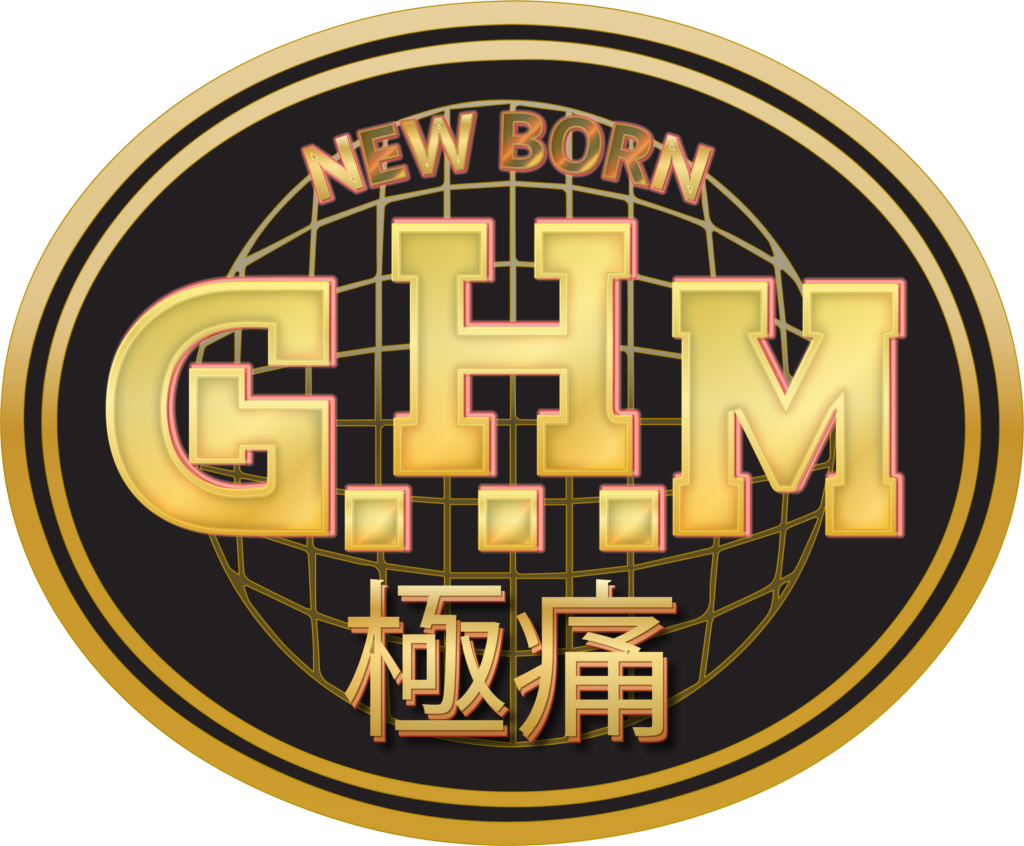
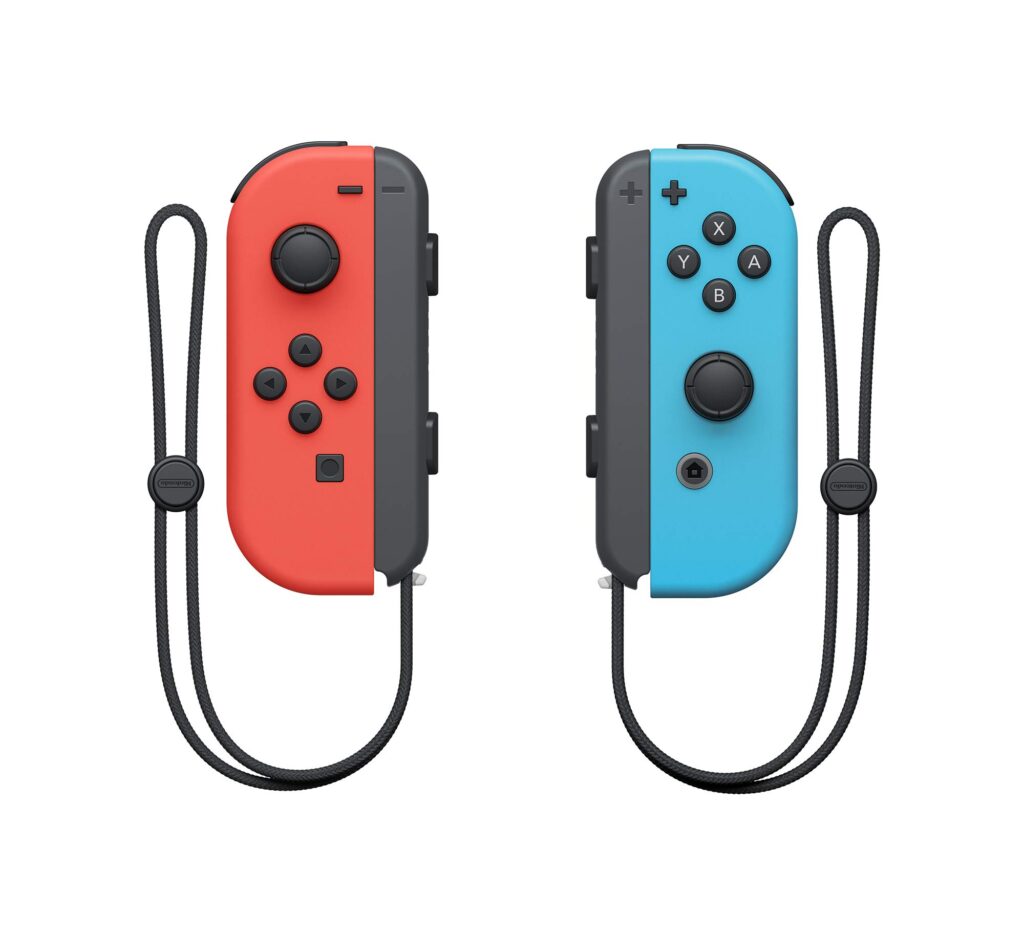
While Travis Strikes Again is mostly known for being the first game developed by the new, downsized GhM, it should be noted that the game most likely entered conceptualization and probably active development before the 2018 split with GungHo, which we discussed in the Let it Die development history. Wikipedia reports that Suda was invited to pre-release Nintendo Switch developer meetings, and that the game’s concept was built around the Joy-Cons, the twin controllers that the console came equipped with. While these claims are unsourced, it’s easy to imagine that the primary controller did serve as a source of inspiration, as the same thing happened during development of killer7, Contact, No More Heroes and Diabolical Pitch, to name a few: TSA would be the first Grasshopper game to be primarily focused on multiplayer, precisely because of the pick-up-and-play nature of the Joy-Cons.
According to this interview, Marvelous lent Grasshopper Manufacture the full rights to the No More Heroes IP (of which they are the majority owner, with GhM only owning a small percentage) for a period of five years ending in 2021, again dating the beginning of TSA’s development in 2016. What’s more, several employees of what would become Super Trick Games (i.e. the Grasshopper employees who’d stay behind with GungHo) and of GungHo itself are listed in the game’s credits.
As we discussed in the previous entry, the first glimpse that audiences got of Travis Strikes Again was at a Nintendo Switch event in January 2017. During the presentation, despite some confusion on the part of the translator, Suda described the upcoming game as the connecting bridge between the world of indie gaming and the Nintendo Switch. Specifically, he tried to convey it through wrestling allegories:
He first referred to the game as a mash-up between shoot wrestling (a style that aimed for realistic matches as opposed to scripted ones) and hardcore wrestling (a more underground style that relied on shock value, with bloody matches that employed barbed wire and other gruesome props), and then as a Fire Pro match between Saeba (alter ego of Akira Maeda, the founder of UWF and Suda’s favorite wrestler, a precursor of shoot style wrestling) and Kita (alter ego of The Great Nita, aka Atsushi Onita, a FMW star, with FMW being a hardcore wrestling promotion).
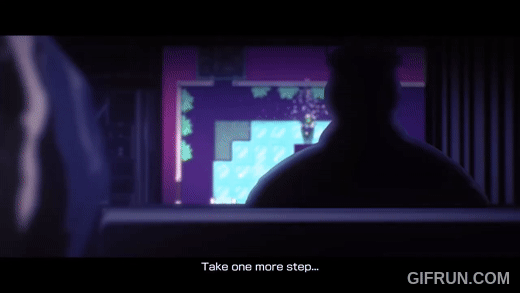
I’m explaining this partly to justify the Japanese wrestling knowledge I’ve had to accumulate for the Champion Road translation, and partly because this explanation was so confusing to audiences that several outlets mistakenly reported that Travis Strikes Again would be a collection of minigames based on several different indie titles. Suda’s intentions were instead to elevate the underground world of indies (hardcore wrestling) through a tag-team match (the game) with a more mainstream icon, Travis himself (Maeda).
With its lower specs yet higher accessibility, as well as a direct push from Nintendo, the Switch proved to be an optimal platform for indie games which, as development was starting on TSA, had just undergone a massive resurgence, spearheaded by the success of titles such as Pixel’s Cave Story, Edmund McMillen’s Super Meat Boy and The Binding of Isaac, Phil Fish’s Fez, Jonathan Blow’s Braid, Zoe Quinn’s Depression Quest, Yacht Club’s Shovel Knight, Lucas Pope’s Papers Please, The Fullbright Company’s Gone Home, Toby Fox’s Undertale (which also carried on the legacy of the webcomic Homestuck, bringing an entire new fanbase into the world of indie gaming), Heart Machine’s Hyper Light Drifter and, most importantly for Suda, Dennaton’s Hotline Miami 1 & 2.
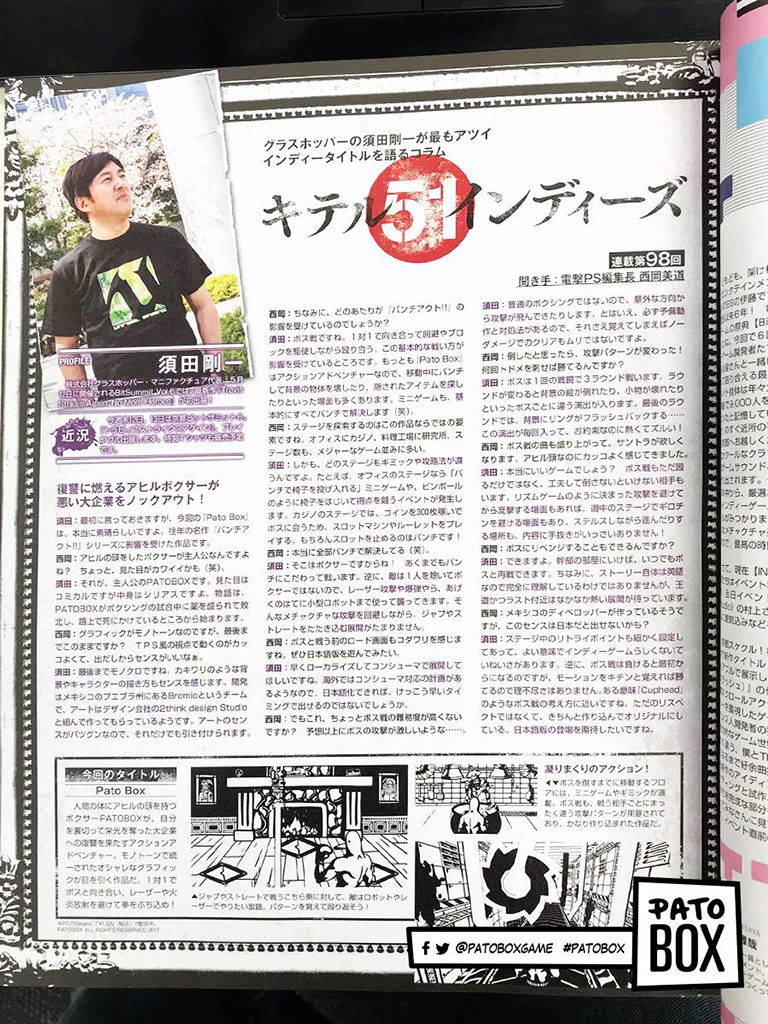
This veritable cornucopia of different and at times fully original gameplay structures and presentation styles, unbridled by market trends due to its independence from the investment system that ended up destroying Kurayami and high-budget gaming in general, provided a refreshing alternative to the ungodly AAA industry, which was, and still is, plagued by an over-reliance on tried-and-tested concepts, endless sequels and increasingly predatory monetization schemes.
Nowadays it’s hard to remember or imagine how close indie games were to breaking into the mainstream; 2012 even saw the release of a Canadian documentary, titled Indie Game: The Movie, chronicling the phenomenon, and Microsoft had its own, dedicated indie storefront through XBLIG.
By that point, Suda had been running a column in Dengeki Playstation titled Kiteru 51 Indie since 2014, where he reviewed his favorite indie titles. In that sense, TSA is as much an extension of Kiteru 51 Indie as the original No More Heroes was an extension of his work with Mask de Uh on Area 51.
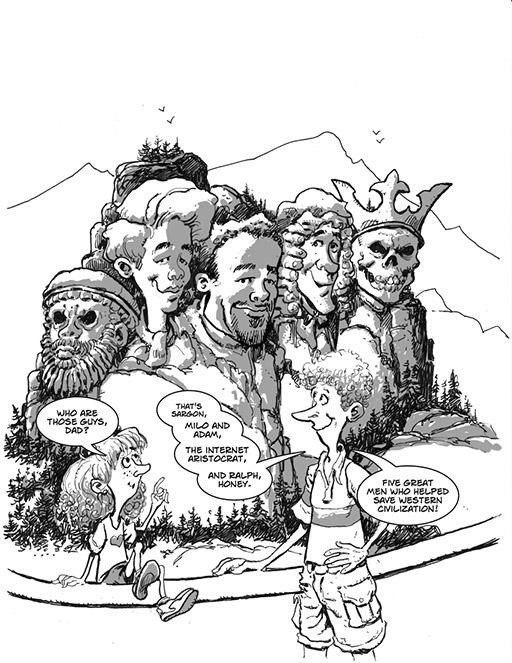
Sadly, it all came to a head with the 2014/2015 USAID-financed and FBI-sponsored controversy called Gamergate, which saw different consumer groups wage a full blown internet war on one another over which of them should be pandered to by the blossoming independent gaming industry, completely excising artistry and artists from the conversation, both “sides” demanding that videogames go back to being products first and foremost.
Ultimately, this resulted in the indie industry becoming just as stagnant, reactionary and boring as the AAA industry, and it also served as a prologue to the so-called “culture wars”, according to which each piece of media is labeled as either right-wing or left-wing in a false dichotomy that serves the sole purpose of producing AI-powered worthless dogshit for the masses to consume without any effort or appeal involved. As such, TSA ended up being more of a eulogy to the indie movement than the bridge to the mainstream that 51 envisioned.
True to Suda’s words, the game’s announcement trailer was shown during the Nindies Summer Showcase of August 2017. That’s when the main premise of the game was revealed to the public: the main plot revolves around the Death Drive Mk. II, a mysterious console able to fully immerse players in their game worlds, stored inside giant eyeballs called Death Balls. Travis is attacked by Bad Man, Bad Girl’s father, out of revenge for her murder in the first game, as the Death Drive activates and suddenly transports them into the world of gaming. The two strike an uneasy truce to track down all six Death Balls, as it is said that the one who beats all of them shall be granted a wish, which they plan to use to restore Bad Girl back to life.
During that summer, the game became somewhat controversial for a couple of reasons:
For one, as mentioned before, Suda’s words were misunderstood to mean that in TSA, Travis would visit the worlds of several indie titles and that the game would act as a collection of minigames. This was quickly clarified, with 51 explaining that the collaborations would take the form of collectible t-shirts that Travis could wear in the game, while each of the game worlds visited by him would be fully original.
Secondly, audiences quickly realized that Travis was not voiced by Robin Atkin Downes in the first trailer; this point remained nebulous for a while, with Downes saying he was not asked to reprise his role shortly after the announcement. GhM’s initial statement was that the game would not feature voice acting (and the final release mostly does not, outside of very few instances), but they later confirmed that each returning character would see the return of their respective voice actors in December of that year.
These controversies partially overshadowed the fact that TSA would represent not only Travis’ return to the world of gaming, but also Suda’s return to the role of writer/director, a position he hadn’t fully occupied since the original No More Heroes.
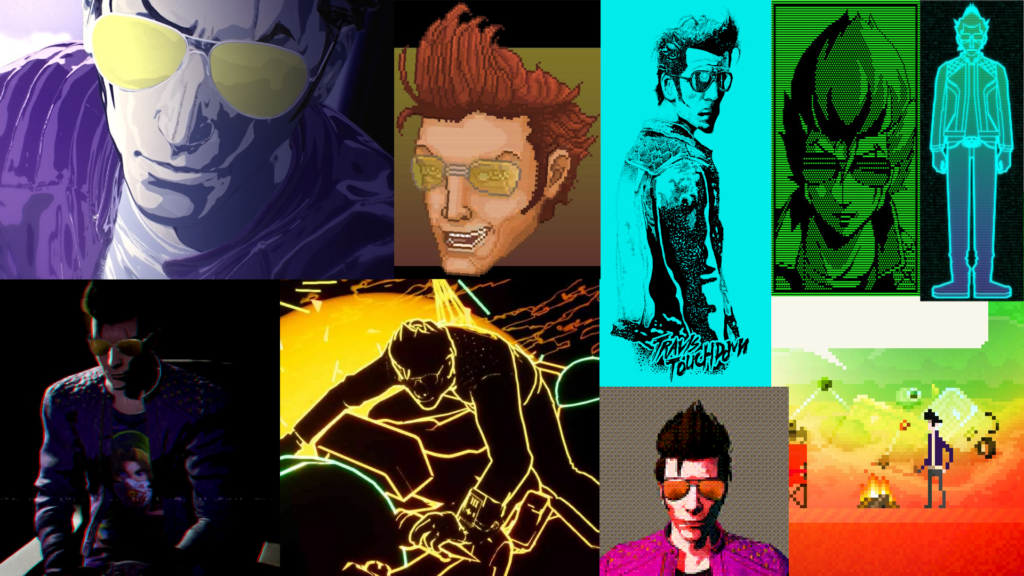
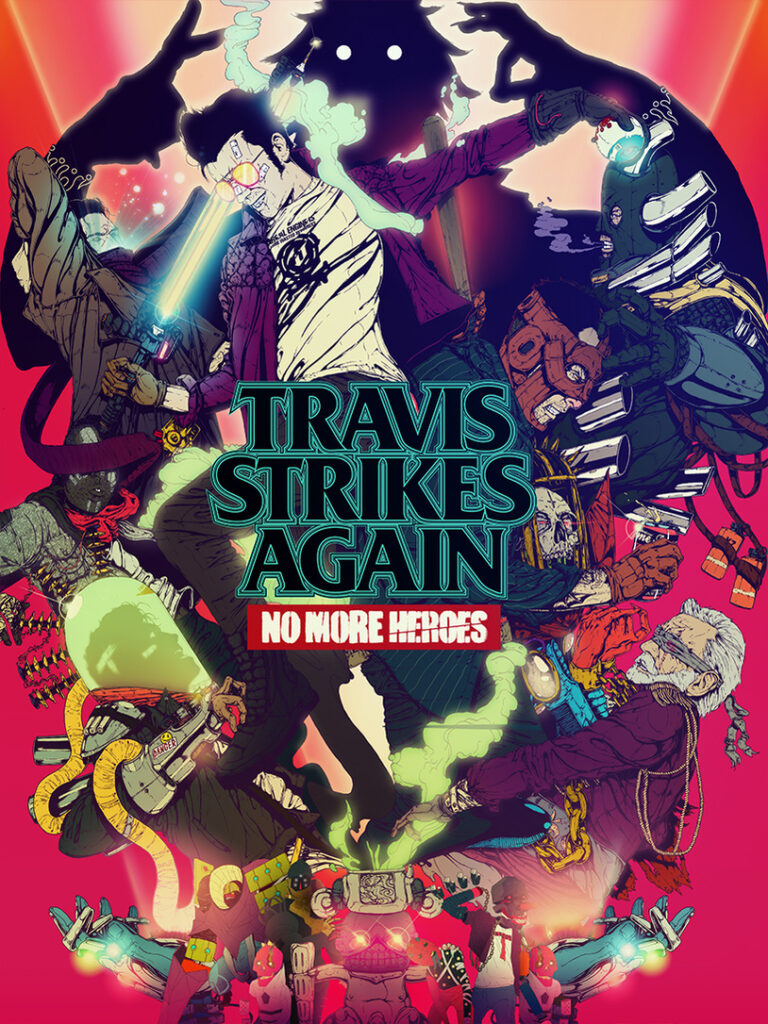
As the break-up with GungHo was getting finalized, the rest of the development team came together: 51 would be accosted in his directorial job by Ren Yamazaki, who had previously left the company shortly after the release of Black Knight Sword, while co-writing duties would fall on Keita Takayanagi. Nobutaka Ichiki from Toon Town, the director of No More Heroes 2, also joined the Newborn GhM and took part in active development as game designer.
As mentioned before, Tadayuki Nomaru kept working with both companies, so he returned as concept artist for TSA; however, bosses were instead designed by an English artist named B0neface, and just like with NMH2, the designs actually predated the script, to the point where Suda only decided to tie the character of Eight Hearts to Johnson, the talking skull of Shadows of the Damned, after seeing the artwork. Their art was made real by 3D character artist Takashi Kasahara, who, like Nomaru, also kept working with GungHo as well on subsequent projects.
Takuma Araki and Yusuke Isao, who had joined the company during development of Let it Die, also followed Suda in his new venture, the former as cinematic director, and the latter as in-game portrait artist. Having lost Akira Yamaoka, the soundtrack was composed and performed by Kazuhiro Abo, while Jun Fukuda remained as sound director.
Travis Strikes Again released on Nintendo Switch in January 2019.
The game originally opened on its reveal trailer, with Bad Man taking his Trans Am to Travis’ trailer in an effort to avenge his daughter. However, a second attract mode was patched into the game seven days after its initial release: in it, it is revealed that Bad Man is none other than Bat Man, aka Shigeki Birkin, the main character from the unfinished Killer is Dead episodic novel (which, in case you haven’t been paying attention, is unrelated to the videogame also called Killer is Dead and was, in fact, a killer7 spin-off).
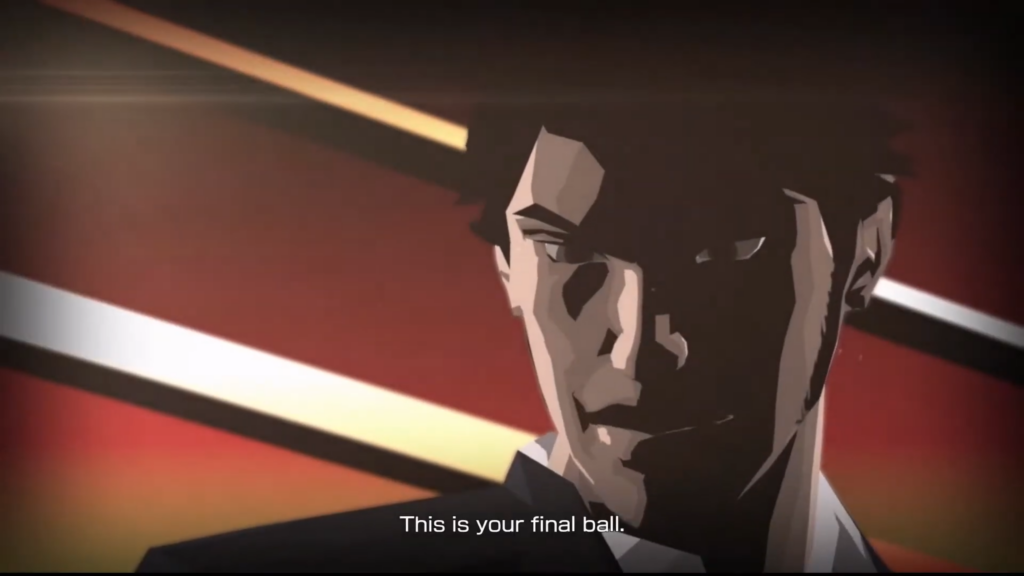
Dan Smith also makes an appearance, giving some closure to the unfinished story, revealing that Birkin saved his own life by selling Dan out to Curtis. His original voice actor, Michael Gough, also reprised his role, though his presence was kept a secret in the original casting call. This is only the first of a myriad of cameos: with TSA marking the 20th anniversary of the company, 51’s Star System is fully realized in the game, with nearly every single GhM title being represented in some way or another.
Just like during the Heroes Era, the amount of cameos shouldn’t be taken as hard canon, however: the No More Heroes series takes place in a world where Japan as a nation exists as it does in the real world, while in the universe of The Silver Case, Kanto is its own state independent from the rest of Japan, and the major cities of Japan were nuked into oblivion in killer7. It’s impossible to construct a coherent timeline out of these different franchises; one should, instead, see each recurring character as a “digital actor”, taking on a similar yet different role in each of their appearances.
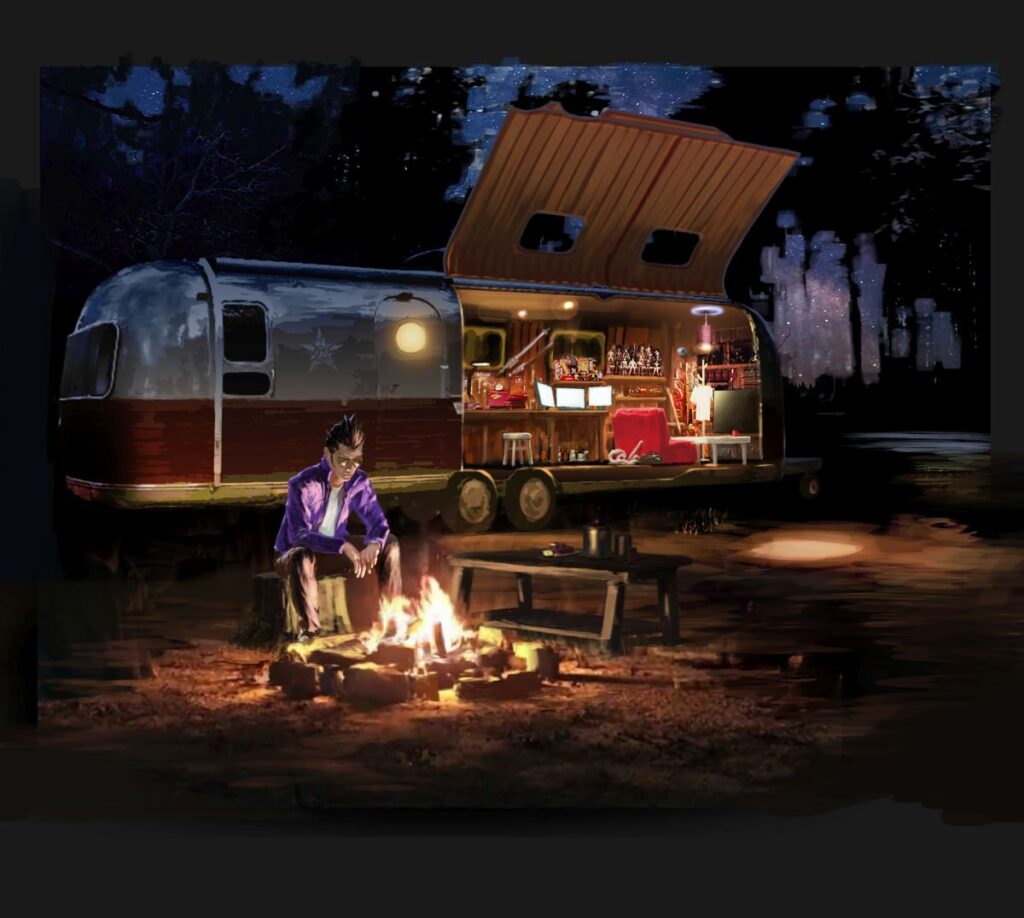
The game is divided between action stages, where Travis and Bad Man hack and slash through each Death Drive game in an isometric view meant to facilitate multiplayer gameplay with the Joy-Cons, and text-adventure stages, in which Travis travels around the world to look for the Death Balls in a DOS-inspired format. In-between stages, players are free to relax in Travis’ trailer house, where he retreated, abandoning friends and family, to take a break from his job as an assassin, much like Suda himself had taken a break as writer-director.
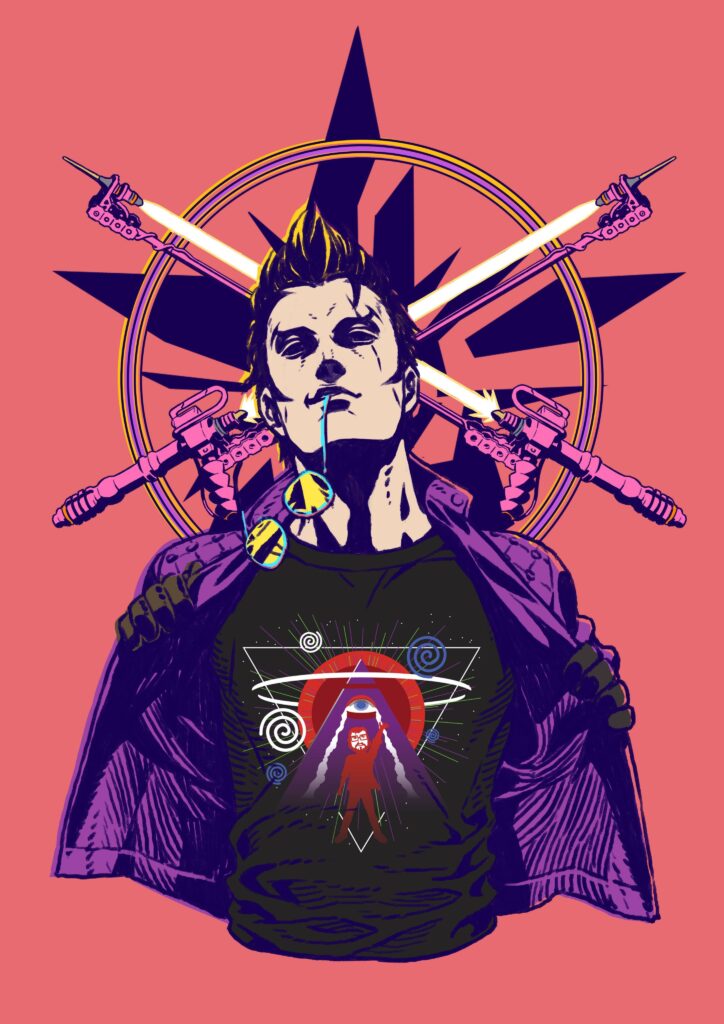
In the trailer, players are free to save the game, order new T-shirts (all based on various indie games) and read reviews for the ramen stands found within the levels, as well as unlockable faxes, expanding on the game’s story and its CIA-centered conspiracy, and vintage magazine previews of the various Death Drive games, starring legendary gamer Master Taro Gida, whom Meijin from Let it Die styled himself after. From there, they can also interact with the Death Drive Mk. II to load one of the games, or with Travis’ bike to begin one of the text adventure stages.
The text adventure, titled Travis Strikes Back, contains the bulk of self-referential cameos:
The first episode, titled Absolute Zero after Kamui Uehara’s nickname in The Silver Case, picks up directly from where one of the many, many endings of The 25th Ward left off, with Kamui being warped through space-time by Red and Blue, transformed respectively in Red Ribbon (a Dragon Ball reference) and Bruno San Marino (a reference to professional wrestler Bruno Sammartino) in order to help Mr. TD (obviously TopDrunkee, but we’ll pretend it stands for TouchDown for the sake of argument) fulfill his destiny of retrieving the six Death Balls. Through the course of their search, Travis and Kamui happen upon Akari Tsukiyono, a character from the manga Kurayami Dance, which itself contained a short tease of Travis Strikes Again.
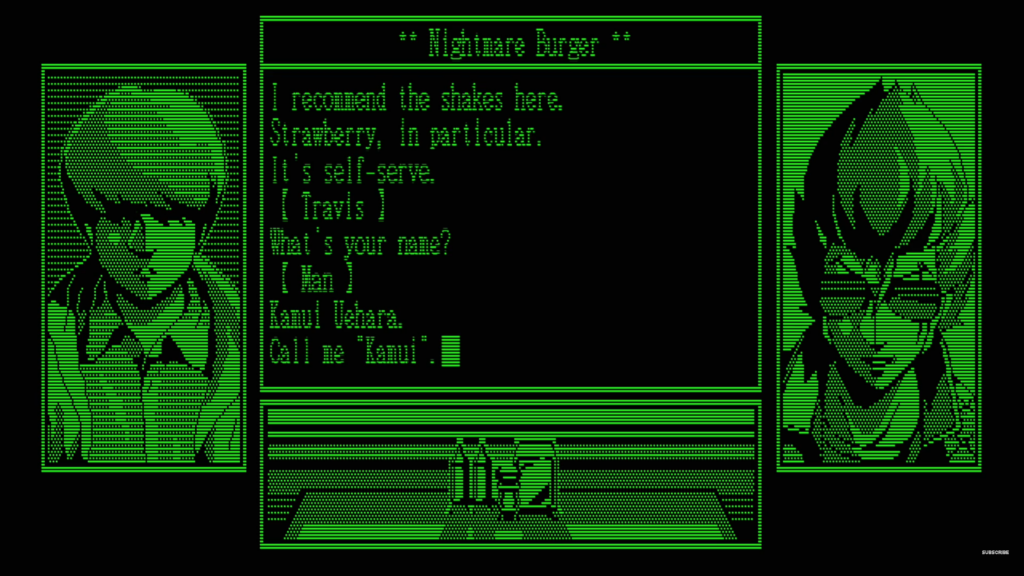
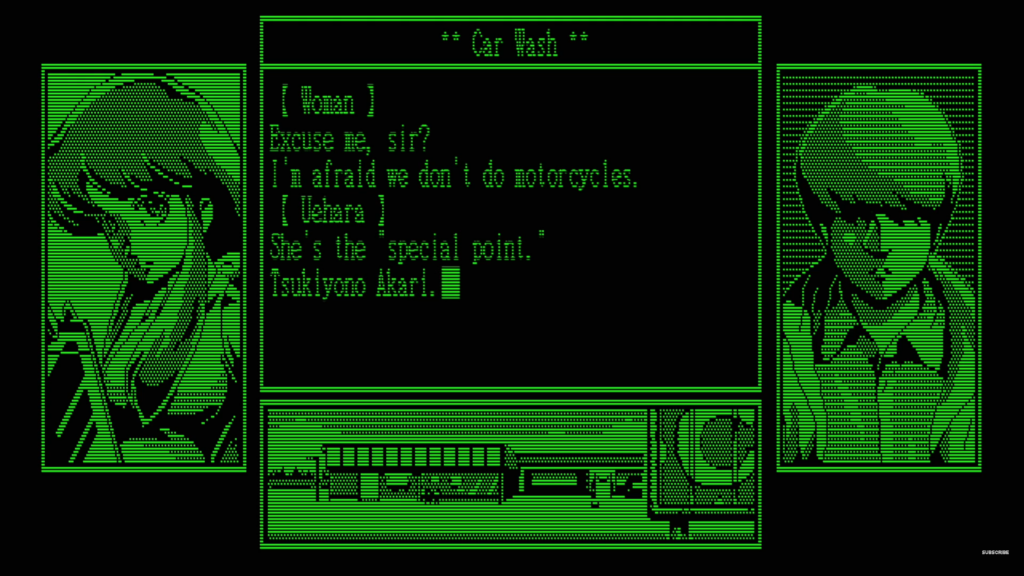
The second episode, Magic Tiger of the Mound, is presented as a short digest, and yet it still manages to feature a cameo in the form of Nigel McAllister, the main character of Diabolical Pitch, with his first name being revealed for the first time.
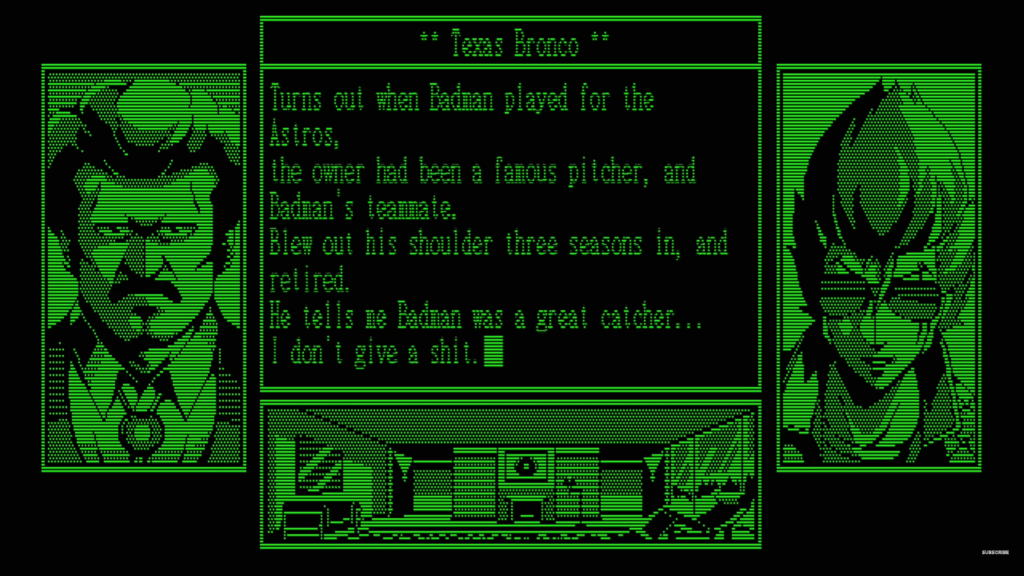
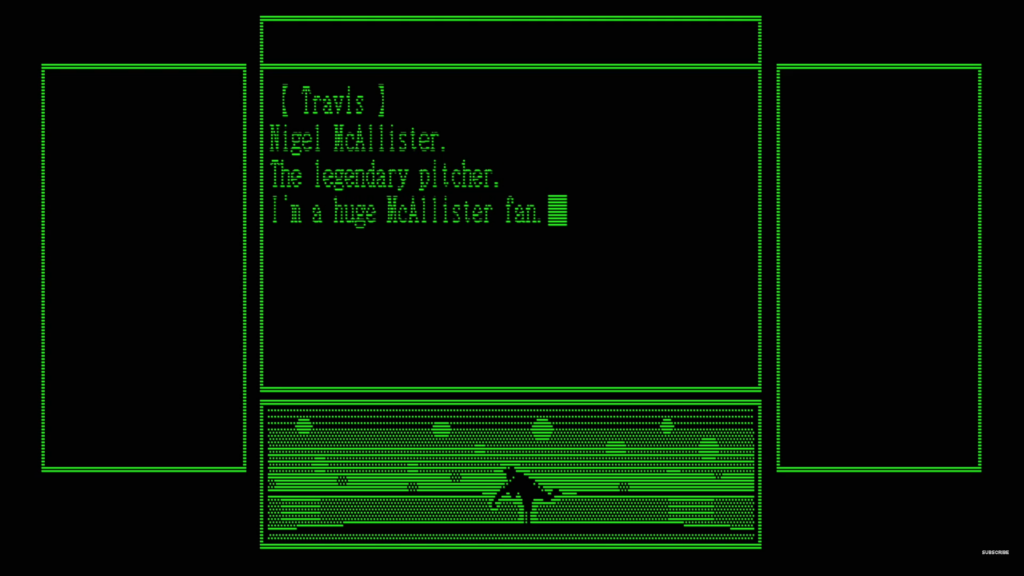
Episode three, National Census, brings Travis to Romania in hopes of hunting Count Dracula, who is in possession of one of the Death Balls. There he meets Mondo Zappa, sporting his glasses-wearing look from the original concept art. This is likely the Mondo from the Suda’s scrapped scenario, since he and his team were originally meant to be vampire hunters. This chapter also features a short appearance by Sundance Shot from Flower, Sun, and Rain as a fortune teller. Dracula’s castle is obviously modeled after Castlevania, and Travis meets a random horse whom he decides is Epona from the Legend of Zelda series.
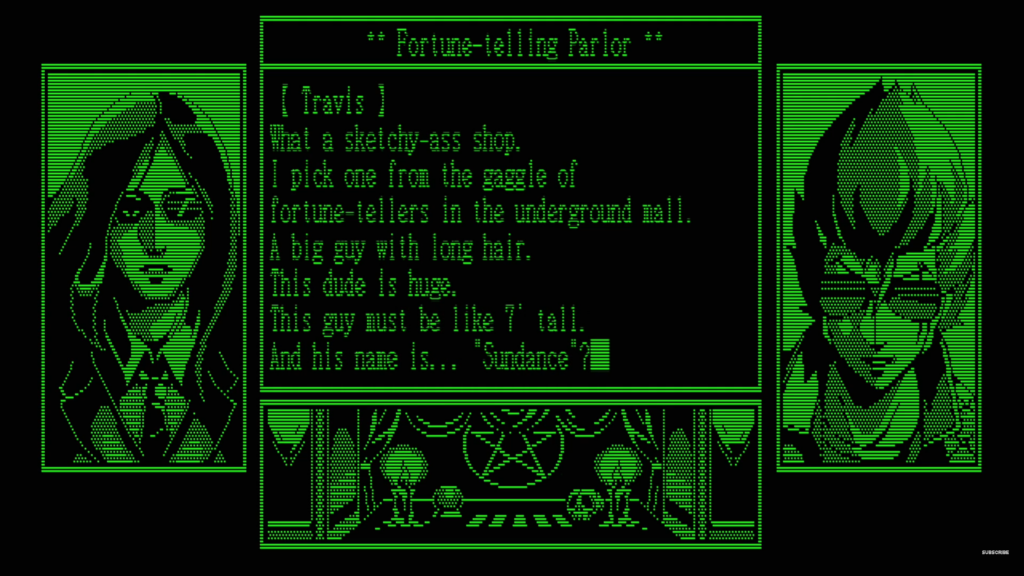
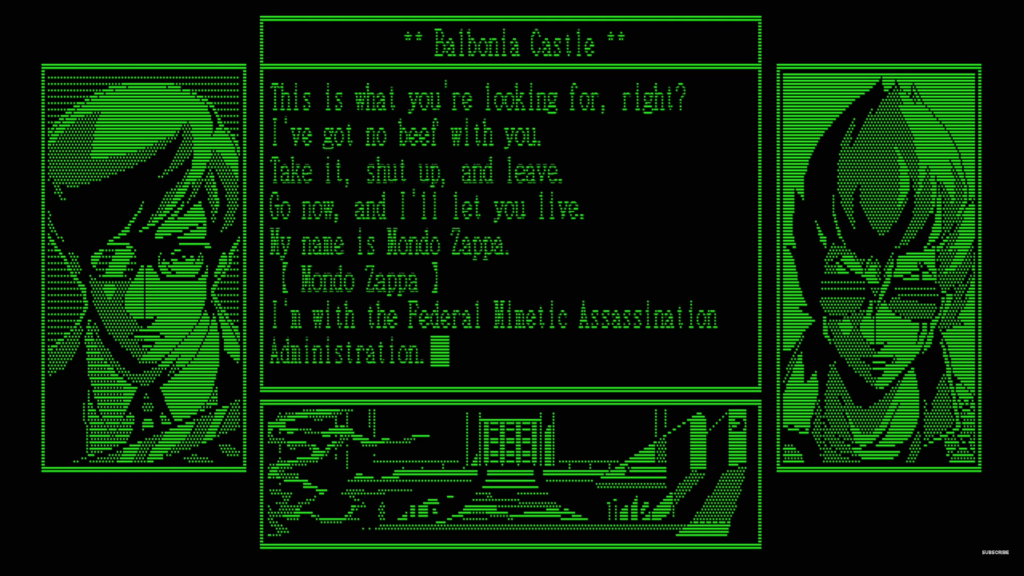
Modern Observation, the fourth episode, functions as a full-blown follow-up to The 25th Ward, with Travis happening upon Tetsugoro Kusabi in the USA before traveling to Japan to visit the now abandoned 25th ward, renamed 0 ward, where he meets with Chillko, Kurumizawa and Shiroyabu. Certain plot points left ambiguous in 25W, such as Kurumizawa’s motivations, are clarified here. It should also be noted that according to Travis Strikes Again, the cataclysm that brought down the 25th ward was called “Earth Rage”, sharing its name with the earthquake shown in Let it Die, indicating that both disasters were possibly man-made.
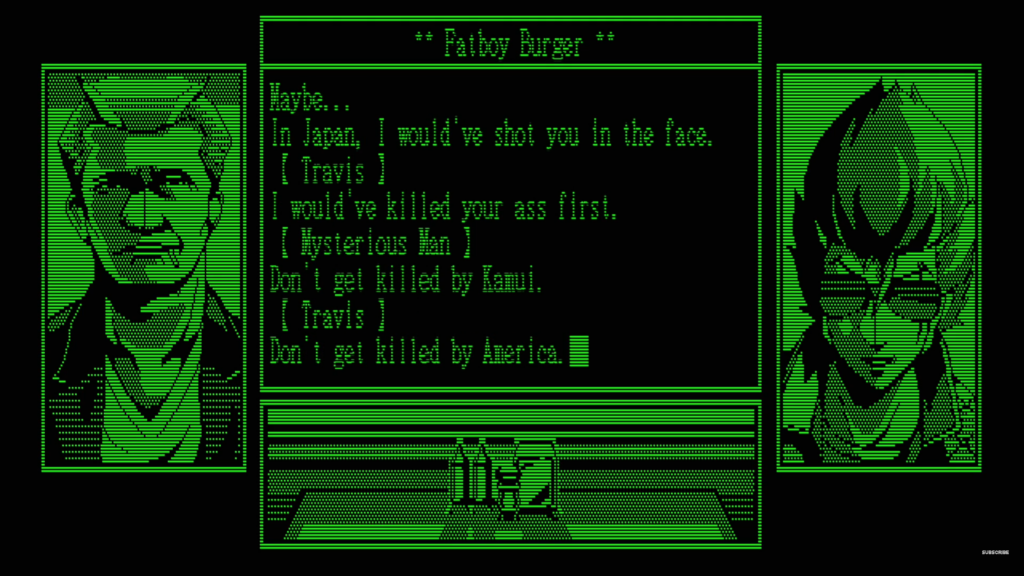
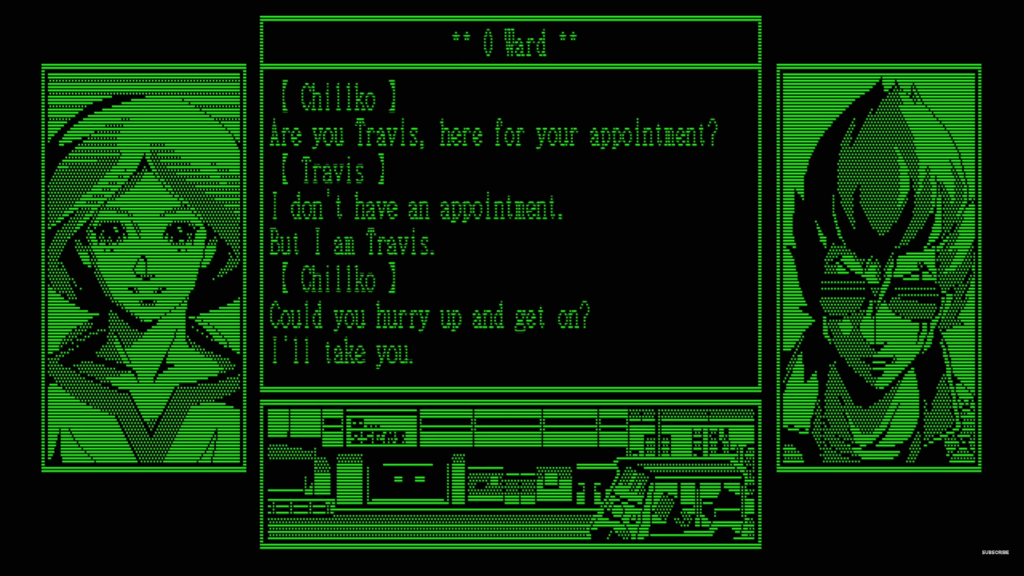
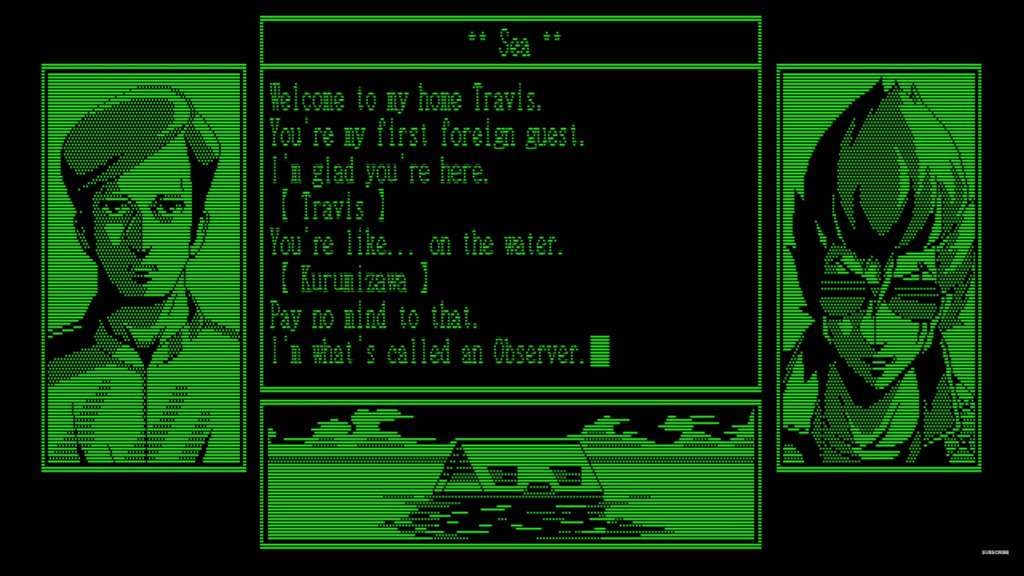
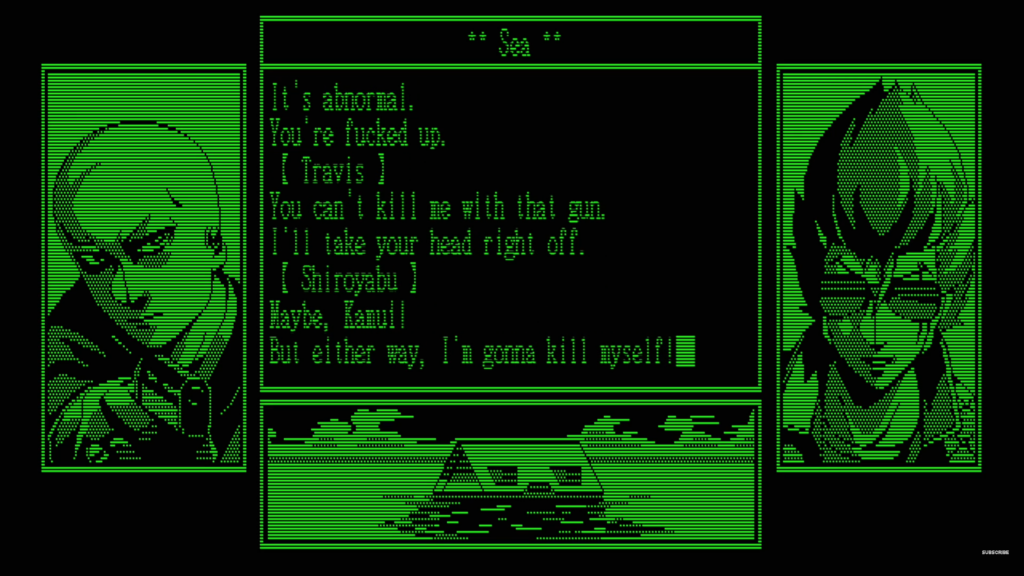
Episode five, Hell’s Chainsaw, is clearly a play on Lollipop Chainsaw. However, GhM was unable to secure the rights for an actual cameo; therefore, Juliet Starling is replaced with Juliet Chesterfield, a former assassin and former professional gamer who works as a secretary in Utopinia, Damon Riccitiello’s company. Damon is a thinly-veiled allegory for John Riccitiello, the president of EA at the time of Shadows of the Damned’s development, and his character actually abused Doctor Juvenile, the creator of the Death Drive Mk. II and the Death Balls, in the process of transforming the game she was developing into something else entirely. This is, again, a not-so-subtle allegory for the troubled development of Kurayami, the game that was ultimately scrapped in favor of Shadows of the Damned. This chapter is also going to be relevant for the game’s sequel, No More Heroes III, as Damon will return as a major antagonist.
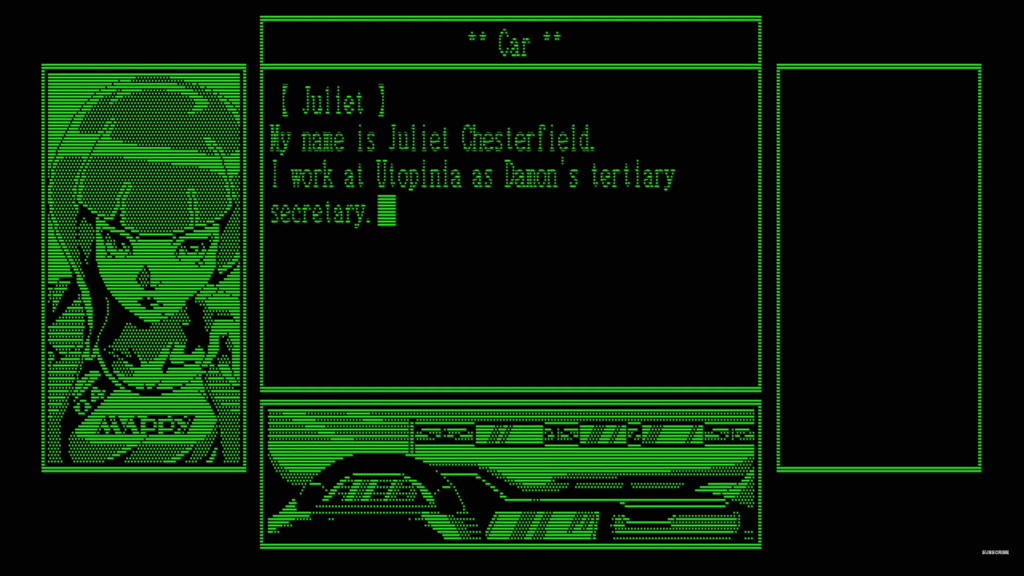
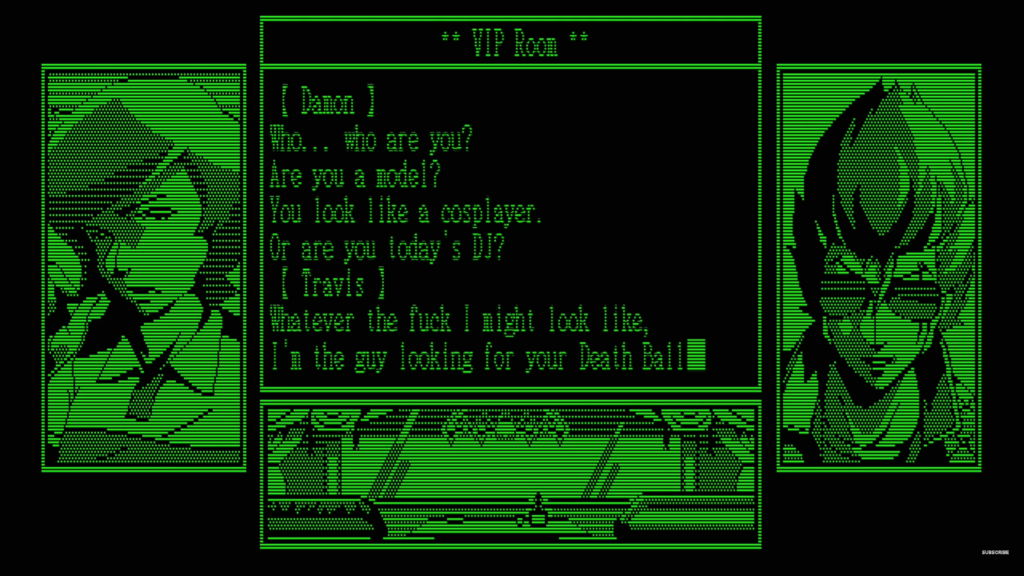
Quark-Gluon Plasma, the original final episode, again stars Kamui Uehara, who is forced into a fight with Travis by a member of TRUMP. In this chapter, Travis also cuts down several characters from various Grasshopper projects that never saw the light of day, killing the company’s past in a sense. In the end, the story again picks up from the same 25W epilogue, leaving Kamui once again at the mercy of space-time, teasing his future appearance in No More Heroes III.
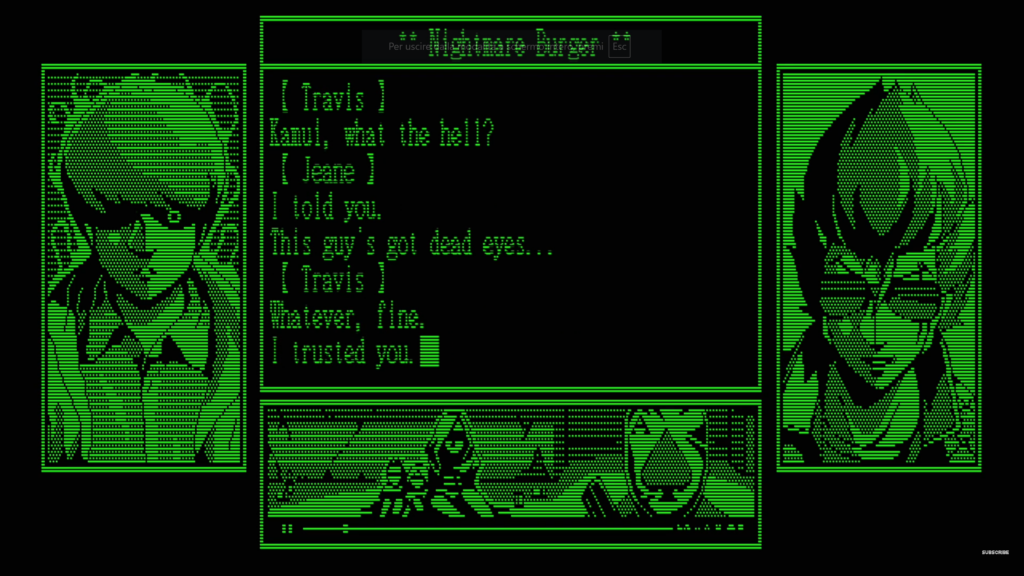
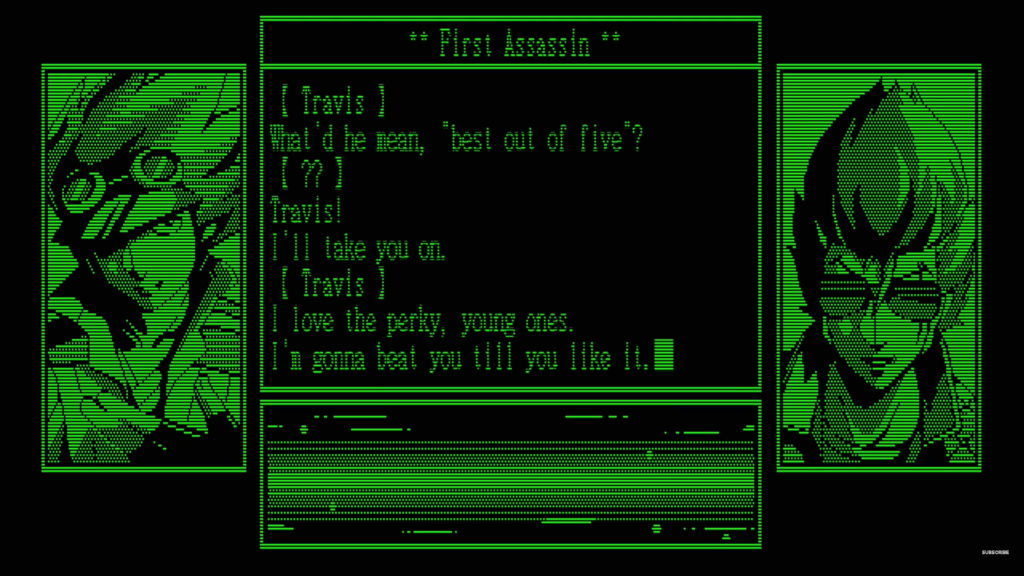
A seventh episode was later added with the second DLC, Bubblegum Fatale, which further teased the game’s sequel by showing more of No More Heroes’ world, including Henry’s new gang, Shinobu’s dojo and Travis’ family. It’s also interesting to note that Notorious shows up here for the first time, and would later make his proper appearance in Champion Road Beyond, a DLC for Fire Pro Wrestling World penned by SUDA51 as a sequel to his very first outing as a writer, Champion Road for Super Fire Pro Wrestling Special. He would also appear in NMHIII, though continuity is a bit iffy, as his appearances in the two games contradict one another. Similarly, this chapter features an alien named Mr. Blackhole, whose appearance will completely change between this game and its sequel.
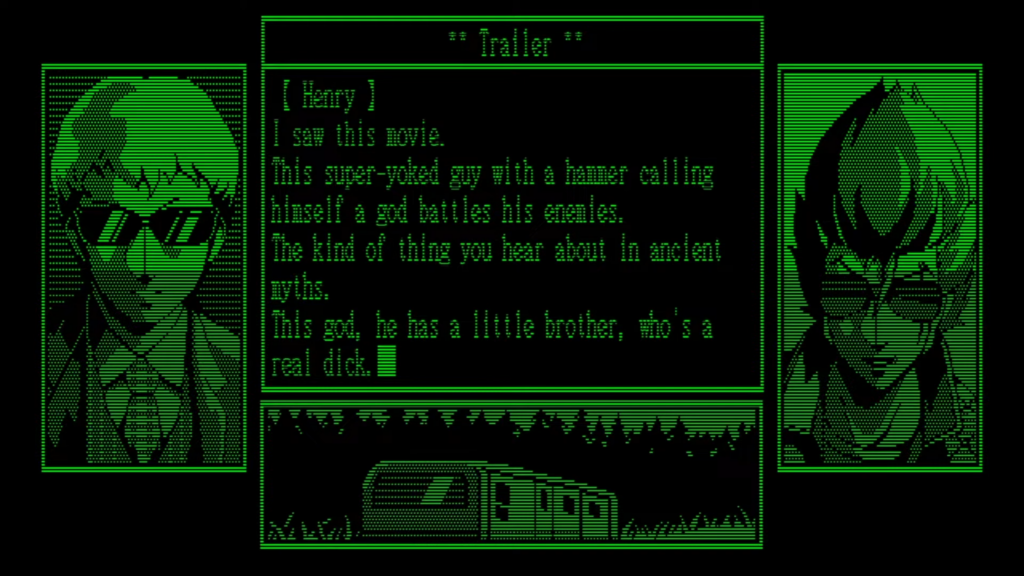
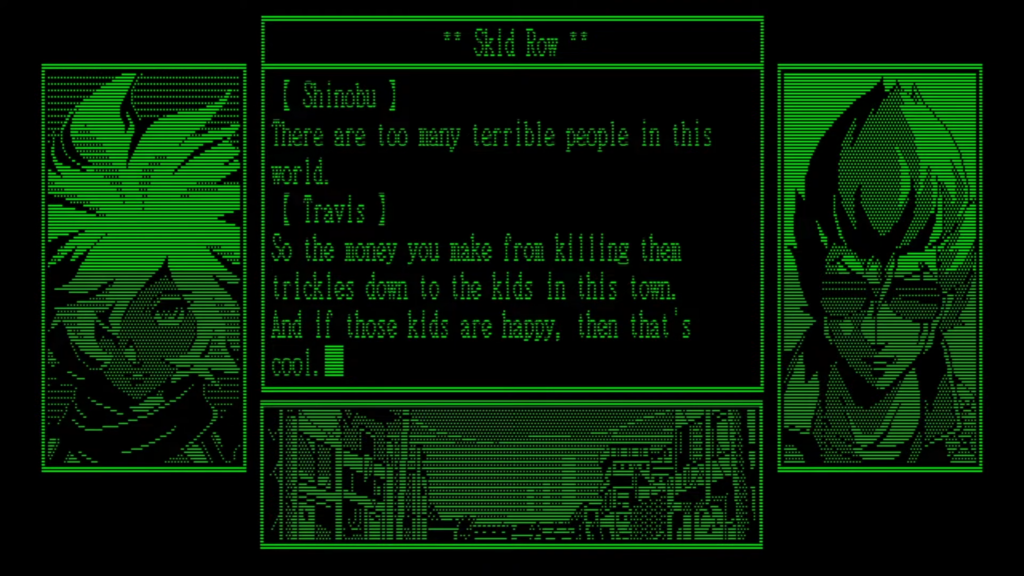
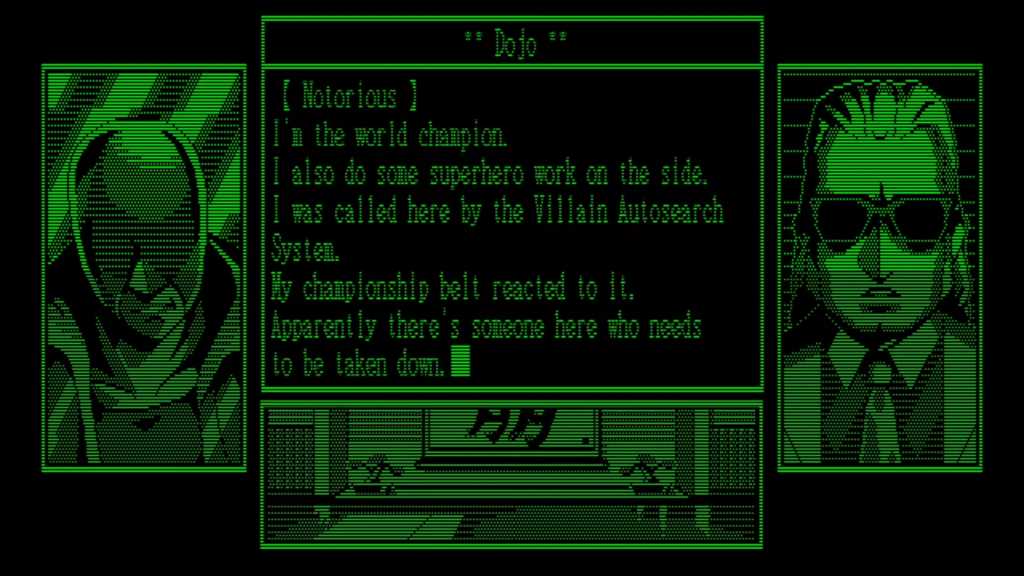
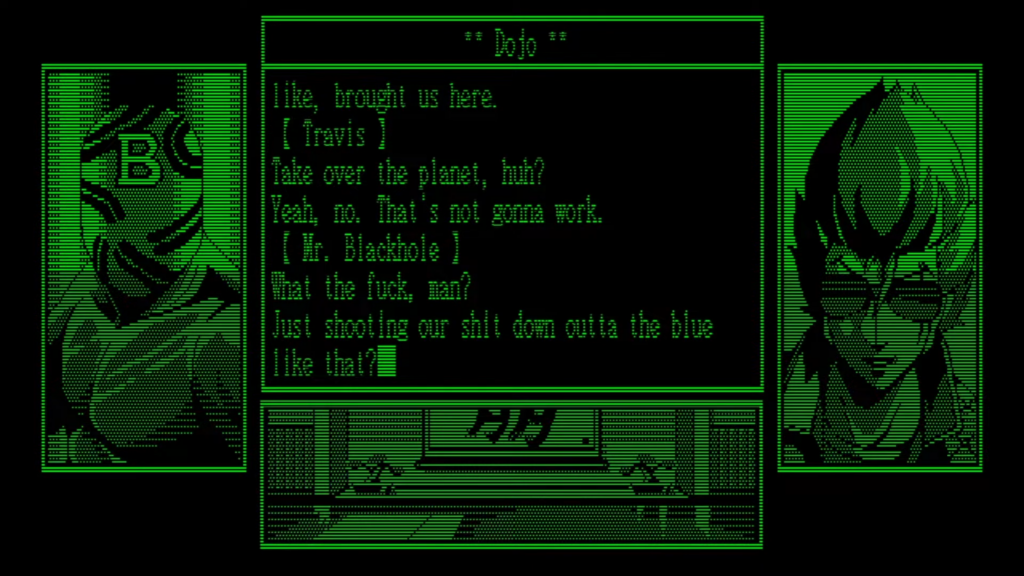
The first DLC, Black Dandelion, also added a second text adventure mode, instead detailing Bad Man’s backstory, how he and Bad Girl came to be killers and how he found out about her murder at the hands of Travis Touchdown. This is notable for having been written by long-time collaborator Masahi Ooka.
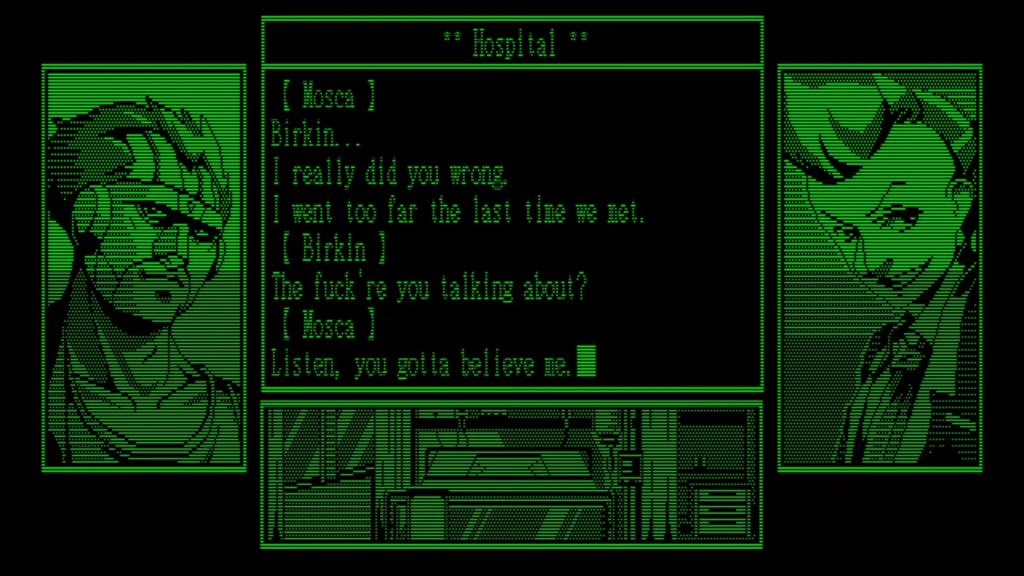
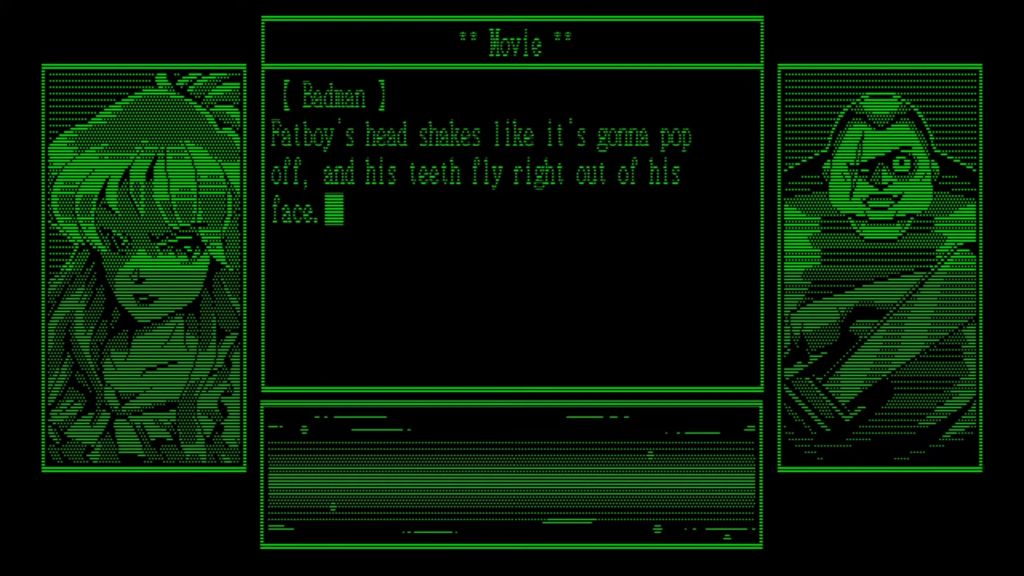
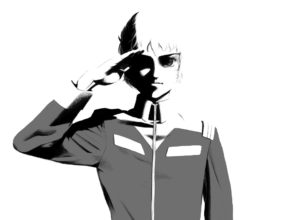
The action stages share the same basic gameplay. Travis and Bad Man are equipped with a light attack and a strong attack, but most importantly with a variety of skill chips that must be found within stages and equipped in order to be used in battle. Each skill chip is named after a different Gundam show, again showing Suda’s passion for the franchise after the numerous references included in the Blackout chapter of The 25th Ward.
In order to mimic the feeling of different games however, each Death Ball also contains different gimmicks:
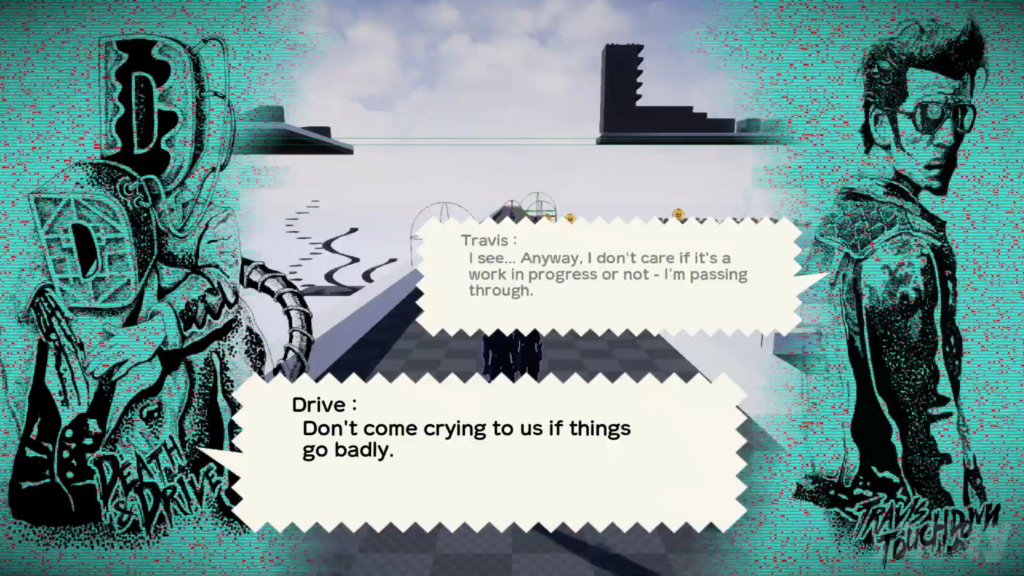
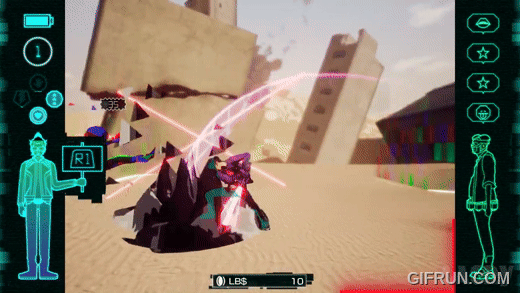
While Travis is the main playable character, the main storyline does not revolve around him: he is described as a “destroyer” within the game worlds he visits, because his role is to put an end to them and their protagonists. As it is revealed in one of the unlockable faxes, the Death Balls continue to “live on” past their point of production, and by the time they reach Travis’ hands, their main characters have grown disillusioned and cynical, having lost their raison d’etre, while their games have been infested by bugs, the game’s main enemy force.
Due to this fact, the game is utterly bloodless compared to the previous two No More Heroes titles; while it is par for the course due to the game’s new premise, Suda revealed in this Crunchyroll interview that the choice to excise violence from the game was actually a personal one, due to his fear of inspiring more real-life violence through his games.
What’s a movie or TV show you’ve recently watched that you think more people should check out?
I came across this documentary on Netflix titled 22 July, about a shooting that happened in Norway. It was very sobering, and made me really think hard about how I use and present guns in video games. It’s interesting because I don’t shy away from violence in games with fists or swords, because there’s a more fantastical element there. But with people dying in the real world, I don’t want to glorify that kind of thing in my games.
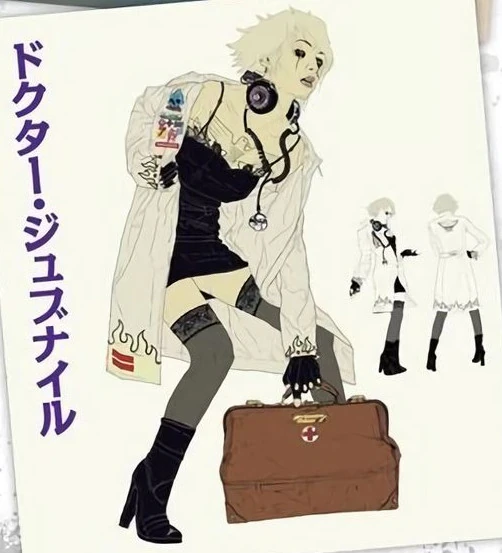
The main story revolves around the aforementioned Dr. Juvenile, creator of the Death Drive Mk. II and its games, which also serves as an allegory for Suda himself as a game developer, much like Kurayami Dance and Makkana Onnanoko put the spotlight on Suda’s childhood and his daily life respectively. While her soul is laid bare through her work, the Death Balls themselves, Juvenile’s private life, such as her relationship with her biological and adopted fathers, her romantic involvement with Kurumizawa and her working history with Damon Riccitiello, must be pieced together through snippets of information acquired during the text adventure stages, while the unlockable faxes, sent to Travis by Juvenile’s lover Klark, shed some light on the CIA-backed conspiracy that led to the creation of the Death Drive.
In them, it is eventually revealed that the Death Drive Mk. II was created with the help of the military and the CIA, as a tool to steal people’s biometric data in order to produce clones. This was initially presented as a plan to colonize Mars, but the truth is that the CIA planned to use the Mk. II as a tool of warfare, which is why Juvenile decided to abandon the project and fill each game with bugs to prevent it from being realized. True to its name, the Mk. II was not the first Death Drive, but instead a follow-up to the DDAAA, an arcade machine created by John Winters (who is also revealed as being Juvenile’s biological father) and based on the real-life urban legend of Polybius. Klark warns Travis that completing all the games will reawaken the DDAAA, kept in storage in a CIA base, but he and Bad Man ignore any warnings in order to fulfill their personal goal of resurrecting Bad Girl.
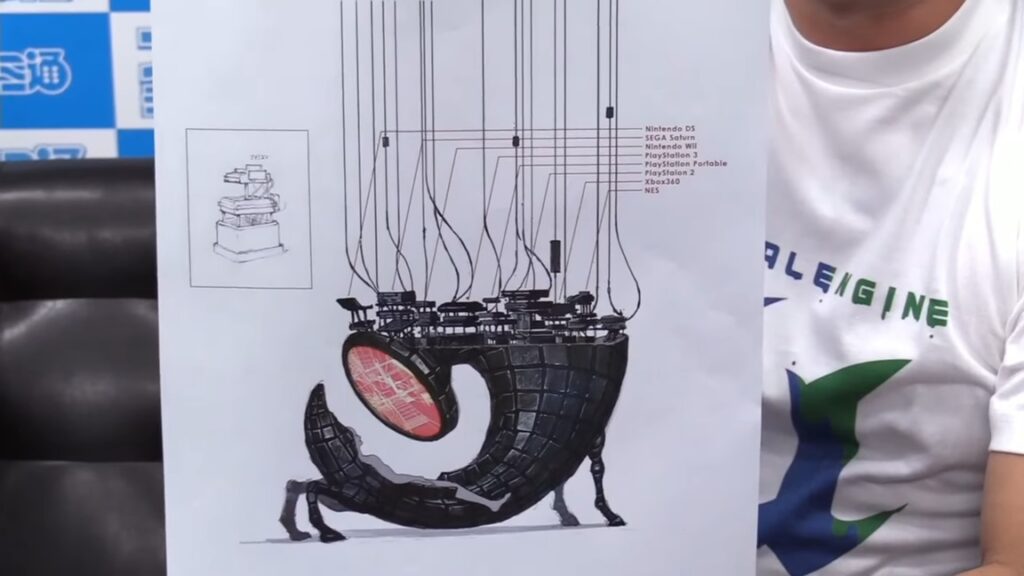
Completing the first six Death Balls summons a Tiger God who restores Bad Girl to life, albeit as a dog, due to the fact that one of the Balls was an incomplete copy of Killer Marathon. More importantly, however, it unlocks the DDAAA and sets forth a chain of events which leads to Klark’s death and Juvenile’s descent into madness. In order to stop both the DDAAA and the plans of Dr. Juvenile to nuke the USA, Travis controls the body of a clone inside the CIA facility through the Death Drive Mk. II.
Having defeated Juvenile in the form of White Sheepman, Travis activates the DDAAA and is transported to Mars into a second cloned body. There he meets John Winters who, much like Travis, has abandoned civilian life to live in solitude. By talking with Winters, Travis realizes it’s time for him to go back aboveground, and so his cloned body is executed. After returning to the trailer, he is met by Shinobu who informs him that “the assassins await”, i.e. that he’s about to go back to his daily life of killing. By completing the DLC campaign, Travis and Bad Man ultimately manage to summon the Tiger God once again and restore Bad Girl to her human form.
The game was later ported on PlayStation 4 consoles and Windows computers in October 2019, with some small differences. For one, the collectible shirts based on The Legend of Zelda franchise had to be removed. Secondly, all DLC content was included in this release, with some small dialogue changes to acknowledge this.
Part 3 – No More Heroes III →
